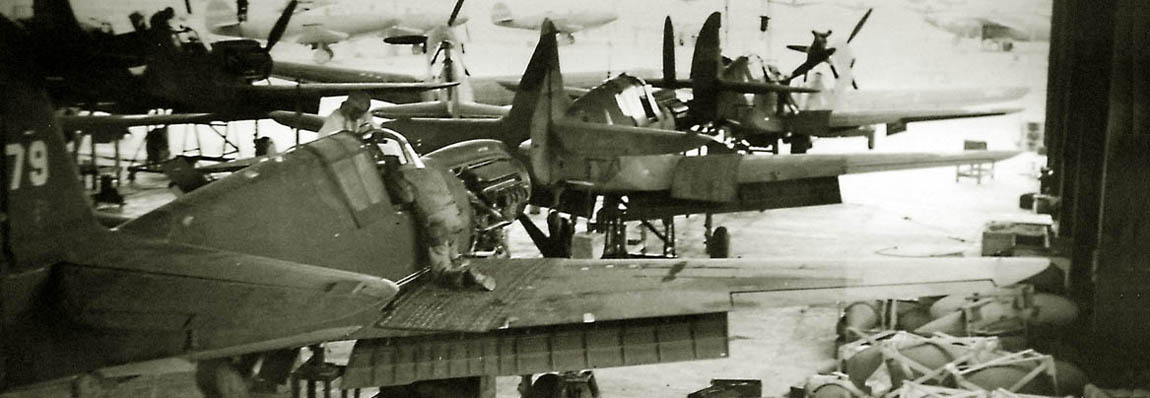
Aviation of World War II


 |
Aviation of World War II |


|
|
Soviet Union | Lend - Lease | Facts | Forum | Germany | Japan | R A F | U S A A F | Other | Photos |
|
|
P-40 "Warhawk"Fighter-BomberCurtiss
Another area of improving the fighter was to facilitate its design. Thus, the P-40L appeared, which was an F variant with four 12.7 mm machine guns, partially removed armor and a reduced fuel supply. These measures also did not produce tangible results. Compared to the P-40F, the speed of the lightweight aircraft has increased by only 7 km / h. Between January and April 1943, the Curtiss factories produced 700 P-40Ls, nicknamed "Gypsy Rose Lee" by the pilots in honor of Miss Lee, a famous stripper during the war. In 1943, the Kittyhawks no longer met the requirements of air war, yielding to enemy fighters in such important indicators as speed, maneuverability and rate of climb. In order to somehow support the combat effectiveness of its fighter and prevent its withdrawal from production, the last serial modification of the aircraft was developed, designated the P-40N (Kittyhawk Mk IV). Externally, the car practically did not differ from the R-40M, but due to the reduced weight of the airframe by 272 kg, it developed a speed of 608 km / h during tests. In addition to the reduced armament to four machine guns and a limited supply of fuel, it also had lightweight chassis wheels and radiators made of light alloys. The P-40N became the most massive of all Kittyhawks - by November 1944, 5129 of these aircraft were manufactured. In the course of serial production, the P-40N acquired a slightly different look. Starting with the fifth series, the shape of the cockpit canopy changed, a new pilot's seat was installed, and the armament was reinforced again to six machine guns. Subsequent series differed in cab equipment and engines of different types. Powerplant. Engine The P-40F and P-40L aircraft were powered by a Packard "Merlin" V-1650-1 12-cylinder V-in-line engine with two-stage supercharging. The engine was produced under license from Rolls-Royce. Starting power 1300 hp / 970 kW at 3000 rpm, combat power at an altitude of 3500 m 1240 hp / 925 kW, combat power at an altitude of 5640 m 1120 hp / 836 kW. The engine was equipped with a Curtiss Electric three-blade variable pitch propeller with a diameter of 3.36 m. The R-40K aircraft were powered by an Allison V-1710-73 (F4R) 12-cylinder V-shaped in-line liquid-cooled engine. Starting power 1325 hp / 991 kW, combat power at an altitude of 3600 m 1150 hp / 860 kW. The engine was equipped with a Curtiss Electric three-blade variable pitch propeller with a diameter of 3.36 m. On the R-40M, P-40N-1 to N-15 aircraft, there was an Allison V-1710-81 (F20R) 12-cylinder V-shaped in-line liquid-cooled engine. Starting power 1200 HP / 895 kW at 2800 rpm, operating power at 5000 m 1000 HP / 746 kW, combat power at 5276 m 1125 HP / 839 kW. The engine was equipped with a Curtiss Electric three-blade variable pitch propeller with a diameter of 3.36 m. On the P-40N-20 to P-40N-35 aircraft, there was an Allison V-1710-99 (later V-1710-15) 12-cylinder V-shaped in-line liquid-cooled engine, with characteristics similar to the V-1710-81 engine. 
|
|
|